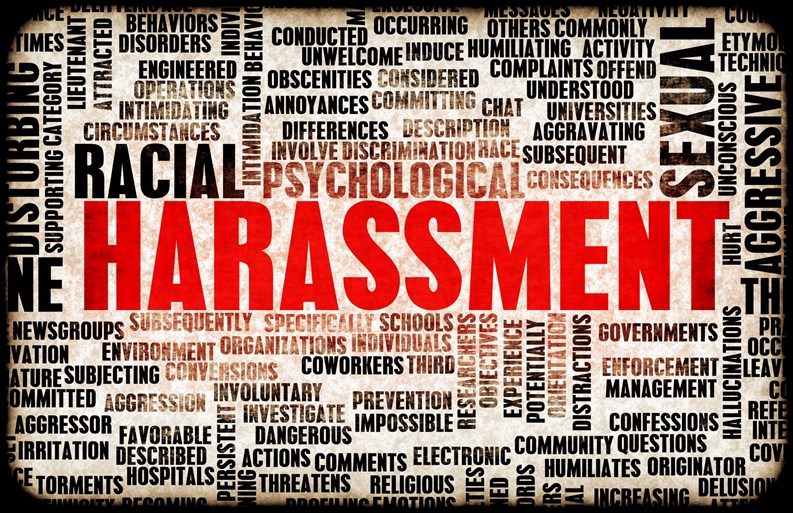While occasional annoyances and interpersonal friction are simply part of the cost of communal living, some behaviors cross the line from minor nuisance into legitimate harassment. Knowing the difference is important—but it can be tricky to discern, and even more difficult to address. After all, ‘harassment’ is a term that gets thrown around a lot (more so lately, it seems) but is often subjective. One person’s ‘persistence’ can be another’s criminal complaint.
Harassment: Difficult to Identify, Harder to Prove
Adding to the interpersonal complexity, laws on harassment vary by state, and levels of criminality can differ within those jurisdictions.
According to several attorneys consulted for this article, there is no civil cause of action for harassment in New York State. That means that any action taken against an accused harasser must be pursued as a criminal case - and depending on a number of factors, that case may be prosecuted as a misdemeanor, a violation, or a felony.
Under New York’s Human Rights Law, sexual harassment, discriminatory harassment, or any type of harassing behavior that rises to the level of violence is considered criminal—and as such should be reported immediately to the police. The New York City Commission on Human Rights defines discriminatory harassment as “threats, intimidation, harassment, coercion, or violence that interferes with a person’s civil or constitutional rights and is motivated in part by that person’s actual or perceived race, creed, color, national origin, gender, sexual orientation, age, disability, or alienage or citizenship status, or other protected status.”
Mark Hakim, a New York City attorney with the firm of Schwartz Sladkus Reich Greenberg Atlas specializing in community law, defines criminal harassment as “the intent to harass, annoy, or alarm another person in or about public places, engage in conduct, or repeatedly commit acts which alarm or seriously annoy the victim, and serve no legitimate purpose.” He notes that proving criminal harassment is often a matter of proving the perpetrator’s intent or purpose—which can be very difficult. “The same behavior repeated in different circumstances may be harassment in one case, but not in the other,” says Hakim.
Chris Florio, attorney with Stark & Stark in Lawrenceville, New Jersey, equates harassment with the bullying that children unfortunately might experience from their peers. Contrary to the “sticks and stones” adage that we all followed in grade school, words can and do hurt. When hurtful words are used repeatedly over time against an individual without provocation, it can constitute harassment. Florio defines a harasser as “someone who is consistently abusive or insulting to you,” adding that the legal definition of harassment “is no different in a multifamily building.”
Harassment in Housing
Unlike New York, New Jersey has arbitration requirements when it comes to disputes involving housing. Florio explains that his state’s Condo Act stipulates that “Any type of housing-related dispute must be provided alternative dispute resolution, or ADR [before escalating to litigation]. Almost anything that happens in a condo can trigger this”—including an accusation of harassment.
When conflicts arise between Garden State residents—including those involving board members or building employees—the ADR clause goes into effect. In this process, the parties must meet with an independent arbitrator or mediator to come up with a mutually satisfactory resolution. The ADR option is available to anyone involved in any civil dispute, of course—but in New Jersey condos, co-ops, and HOAs (in addition to rental apartments and other types of housing), the process is mandatory before a case can be considered for escalatory processes.
If the harassment is discriminatory in nature, or if ADR fails to remedy the situation, “It would be incumbent upon the association to act,” says Florio, adding that especially if the harassment is taking place in a building or community’s common areas, it’s the board’s responsibility to either invoke remedies or penalties stipulated by the community’s governing documents, or to refer the case to the proper authorities. Failing to do so may expose the board to legal liability.
Most condo declarations have anti-nuisance provisions that allow boards to take action in situations that cause any kind of disturbance to unit owners in common areas. In New York and other states where co-ops are prevalent, proprietary leases also generally include a warranty of habitability, which similarly affords residents quiet enjoyment of their homes, among other provisions.
According to Hakim, in the co-op context, “There may be instances where the actions of another resident or shareholder causes a breach of that warranty, and the cooperative could be liable. The cooperative’s board should intervene [in such cases], but not over-intervene. If a board overreaches, the shareholders or residents may assert that the board acted outside the scope of its authority. It is a delicate balancing act that each board and all [managing] agents must deal with on a daily basis.” He recommends that boards and managers carefully address all instances of potential harassment with legal counsel and maintain an arm’s length of separation as the examination of the incident or incidents proceeds.
Case By Case
Given the visible role they play in governing their building or HOA, board members themselves are prone to being both targeted by and accused of harassing behavior.
For example, back in 2018 the story broke about a condo building in Queens whose house rules included a provision requiring owners to prove their immigration status—in clear violation of New York City’s Human Rights Law. The situation came to public attention when the building’s manager, Neal Milano, took it upon himself to plaster the building’s lobby with propaganda and images that included references to Nazi Germany and other fascist governments. According to reporting by the Daily News, he also harassed residents about their immigration status, national origin, and race.
After a complaint was brought to the city’s Commission of Human Rights, Milano was forced to resign. The offensive posters were removed, and replaced with notifications of the city’s fair housing policies and basic owners’ rights. Two board members of the condo also implicated in the discriminatory behavior were forced to resign from their positions as well. The condo association was required to amend its house rules, removing the discriminatory provision to comply with the city’s Human Rights Law. A spokesperson for the Commission of Human Rights at the time was quoted as saying, “We hope this settlement sends a strong message to housing providers citywide that New York City does not tolerate discrimination or harassment, and that we will not hesitate to take immediate action when we learn of violations.”
You Can’t Spell ‘Harassment’ Without ‘Ass’
According to the attorneys interviewed for this article, and as evidenced by the cases cited, what carries someone’s unwelcome behavior up to the level of harassment can be summarized as language, context, and intent. An annoying neighbor who constantly plays loud music or insults your front yard plantings or asks for outlandish favors might not be harassing you—he might just be a jerk. But if the music persists after repeated—and documented—requests to cease and desist; or if the horticultural slights contain vulgarities or hostility; or if the solicited favors cross over into ‘too familiar’ territory, it might be time to escalate the situation to your manager, board, or even law enforcement authorities—and possibly all three, depending on the degree and persistence of the problem.
If you are a resident of New York State and believe you have been the victim of harassment or harassing behavior, file a complaint with the Division of Human Rights at www.dhr.ny.gov/complaint or call 888-392-3644.










Leave a Comment